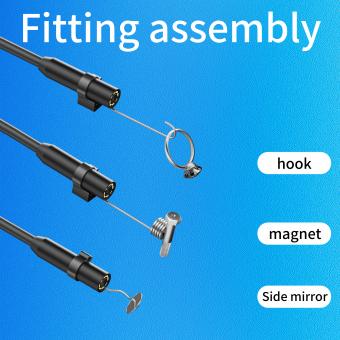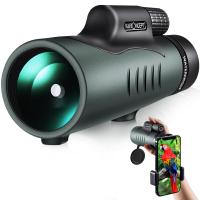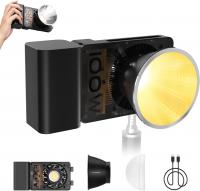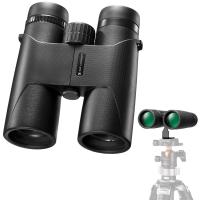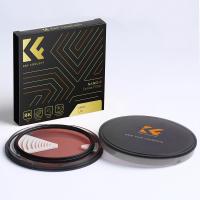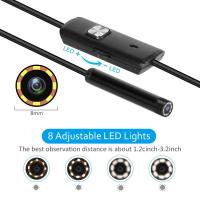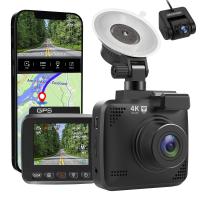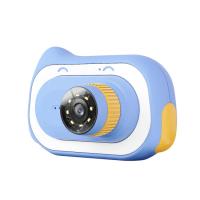Who Named The Endoscope ?
The endoscope was named by Philipp Bozzini, a German physician, in the early 19th century.
1、 Invention and Development of the Endoscope
The endoscope, a remarkable medical device used for visualizing internal organs and body cavities, was not named by a single individual. Its name is derived from the Greek words "endo" meaning "within" and "skopein" meaning "to look." The term "endoscope" was coined to describe the instrument's ability to provide an internal view of the human body.
The invention and development of the endoscope can be attributed to numerous pioneers in the field of medicine. One of the earliest recorded instances of endoscopy dates back to the 2nd century AD when the Roman physician Arateus of Cappadocia used a speculum to examine the rectum. However, it wasn't until the late 19th and early 20th centuries that significant advancements were made in endoscopic technology.
One of the key figures in the development of the modern endoscope was Philipp Bozzini, a German physician who introduced the "Lichtleiter" or "light conductor" in 1806. This early endoscope used a series of mirrors and candles to illuminate the body cavities. Bozzini's work laid the foundation for subsequent innovations in endoscopy.
Over the years, many other medical professionals contributed to the refinement and improvement of the endoscope. Notable names include Antonin Jean Desormeaux, who developed the first practical cystoscope in 1853, and Rudolf Schindler, who introduced the first flexible endoscope in 1932.
It is important to note that the development of the endoscope has been a collective effort, with countless researchers, engineers, and physicians contributing to its evolution. The latest point of view regarding the endoscope is that it continues to undergo advancements, particularly in the field of minimally invasive surgery. New technologies, such as high-definition imaging and robotic-assisted systems, are revolutionizing the capabilities of endoscopy and improving patient outcomes.
In conclusion, while the endoscope was not named by a specific individual, its name reflects its purpose of providing internal visualization. The invention and development of the endoscope can be attributed to a multitude of pioneers in the field of medicine, and it continues to evolve with the latest advancements in technology.

2、 Pioneers in Endoscopy
The endoscope, a vital tool in modern medicine, was not named by a single individual but rather evolved over time through the contributions of numerous pioneers in the field of endoscopy. The term "endoscope" itself is derived from the Greek words "endo" meaning "within" and "skopein" meaning "to look."
One of the earliest pioneers in endoscopy was Philipp Bozzini, a German physician who developed an instrument called the "Lichtleiter" in the early 19th century. Bozzini's device used a series of mirrors to reflect light into body cavities, allowing for visual examination. Although Bozzini's instrument was not as advanced as modern endoscopes, his work laid the foundation for future advancements in the field.
Another significant contributor to the development of endoscopy was Rudolf Schindler, an Austrian urologist who introduced the concept of using flexible tubes for internal examinations in the late 19th century. Schindler's work paved the way for the flexible endoscopes that are commonly used today.
In the 20th century, advancements in endoscopy continued with the contributions of pioneers such as Georg Wolf, who developed the first practical gastrocamera, and Basil Hirschowitz, who invented the fiberoptic endoscope. These innovations greatly improved the quality and versatility of endoscopic procedures.
It is important to note that the development of endoscopy has been a collaborative effort involving countless researchers, engineers, and medical professionals. While the specific individual who coined the term "endoscope" may be unknown, the collective efforts of these pioneers have revolutionized the field of medicine and continue to shape the way we diagnose and treat various conditions.
From a modern perspective, the field of endoscopy has seen further advancements with the introduction of technologies such as high-definition imaging, miniaturized cameras, and robotic-assisted systems. These innovations have enhanced the precision and effectiveness of endoscopic procedures, allowing for more accurate diagnoses and minimally invasive treatments.
In conclusion, the endoscope was not named by a single individual, but rather emerged through the contributions of numerous pioneers in the field of endoscopy. Their collective efforts and ongoing advancements have transformed the practice of medicine, enabling healthcare professionals to visualize and treat internal conditions with greater precision and minimal invasiveness.
3、 Evolution of Endoscope Design
The endoscope, a vital tool in modern medicine, was not named by a single individual. The term "endoscope" is derived from two Greek words: "endo," meaning within, and "skopein," meaning to look or examine. This combination accurately describes the purpose of the device, which allows doctors to visualize and examine the internal organs and structures of the body.
The development of the endoscope can be traced back to ancient times, with early attempts to explore the human body using rudimentary instruments. However, it was not until the late 19th and early 20th centuries that significant advancements were made in endoscope design.
Pioneers in the field of endoscopy, such as Philipp Bozzini, Antonin Jean Desormeaux, and Rudolf Schindler, made significant contributions to the evolution of endoscope design. They developed various types of endoscopes, including rigid and flexible models, which laid the foundation for the modern endoscope.
In recent years, there have been significant advancements in endoscope technology. The introduction of miniaturized cameras, high-resolution imaging, and fiber-optic illumination has revolutionized the field. These advancements have allowed for better visualization, improved diagnostic capabilities, and minimally invasive procedures.
While the endoscope has come a long way since its early beginnings, it is important to note that the term "endoscope" itself was not coined by a specific individual. Instead, it is a descriptive term that accurately reflects the purpose of the device. The evolution of endoscope design continues to this day, with ongoing research and development aimed at further improving its capabilities and expanding its applications in the field of medicine.
4、 Contributions to Endoscopy by Medical Professionals
The endoscope, a vital tool in modern medicine, was not named by a single individual but rather evolved over time through the contributions of numerous medical professionals. The concept of using a tube to visualize internal organs dates back to ancient times, with early attempts made by the Egyptians, Greeks, and Romans. However, it was not until the 19th century that significant advancements were made in endoscopy.
One of the pioneers in this field was Philipp Bozzini, a German physician who developed an early form of endoscope called the "Lichtleiter" in 1806. Bozzini's device used a series of mirrors to reflect light into the body, allowing for the visualization of internal organs. Although his invention was limited in its capabilities, it laid the foundation for future developments in endoscopy.
In the early 20th century, several medical professionals made significant contributions to endoscopy. Georg Kelling, a German surgeon, introduced the use of a cystoscope to examine the bladder in 1901. This marked a major breakthrough in the field, as it allowed for direct visualization of internal organs without the need for invasive surgery.
Another notable figure in the history of endoscopy is Rudolf Schindler, an Austrian otolaryngologist who developed the first flexible endoscope in 1950. This innovation revolutionized the field by enabling the examination of previously inaccessible areas of the body.
Since then, countless medical professionals have contributed to the advancement of endoscopy. Today, endoscopes have become highly sophisticated instruments, incorporating advanced imaging technologies and minimally invasive techniques. The latest point of view in endoscopy emphasizes the importance of interdisciplinary collaboration, with medical professionals from various specialties working together to improve patient outcomes and expand the applications of endoscopic procedures.
In conclusion, the endoscope was not named by a single individual, but rather evolved through the collective efforts of medical professionals over centuries. Their contributions have transformed endoscopy into an indispensable tool in modern medicine, enabling the diagnosis and treatment of a wide range of conditions.

